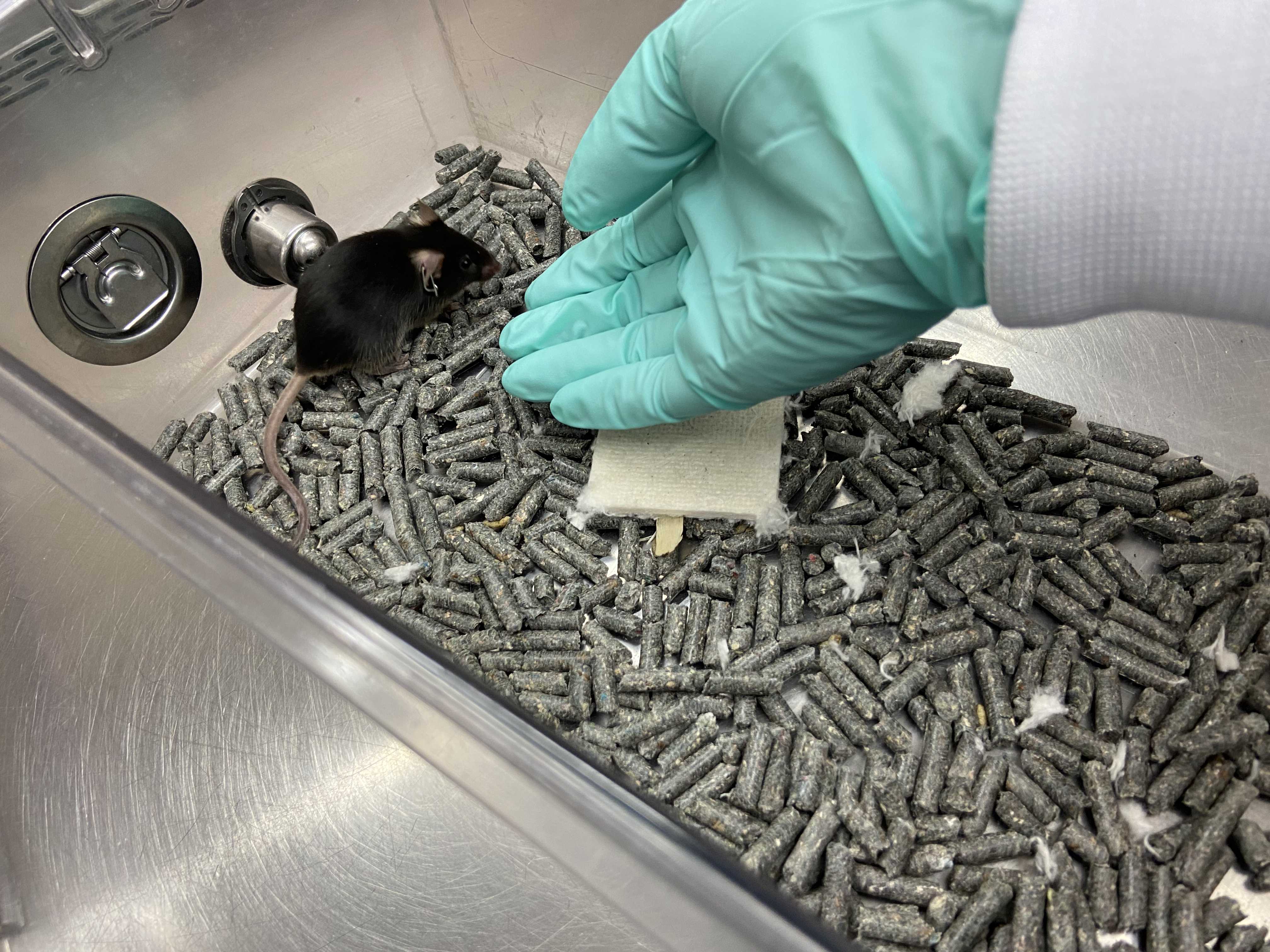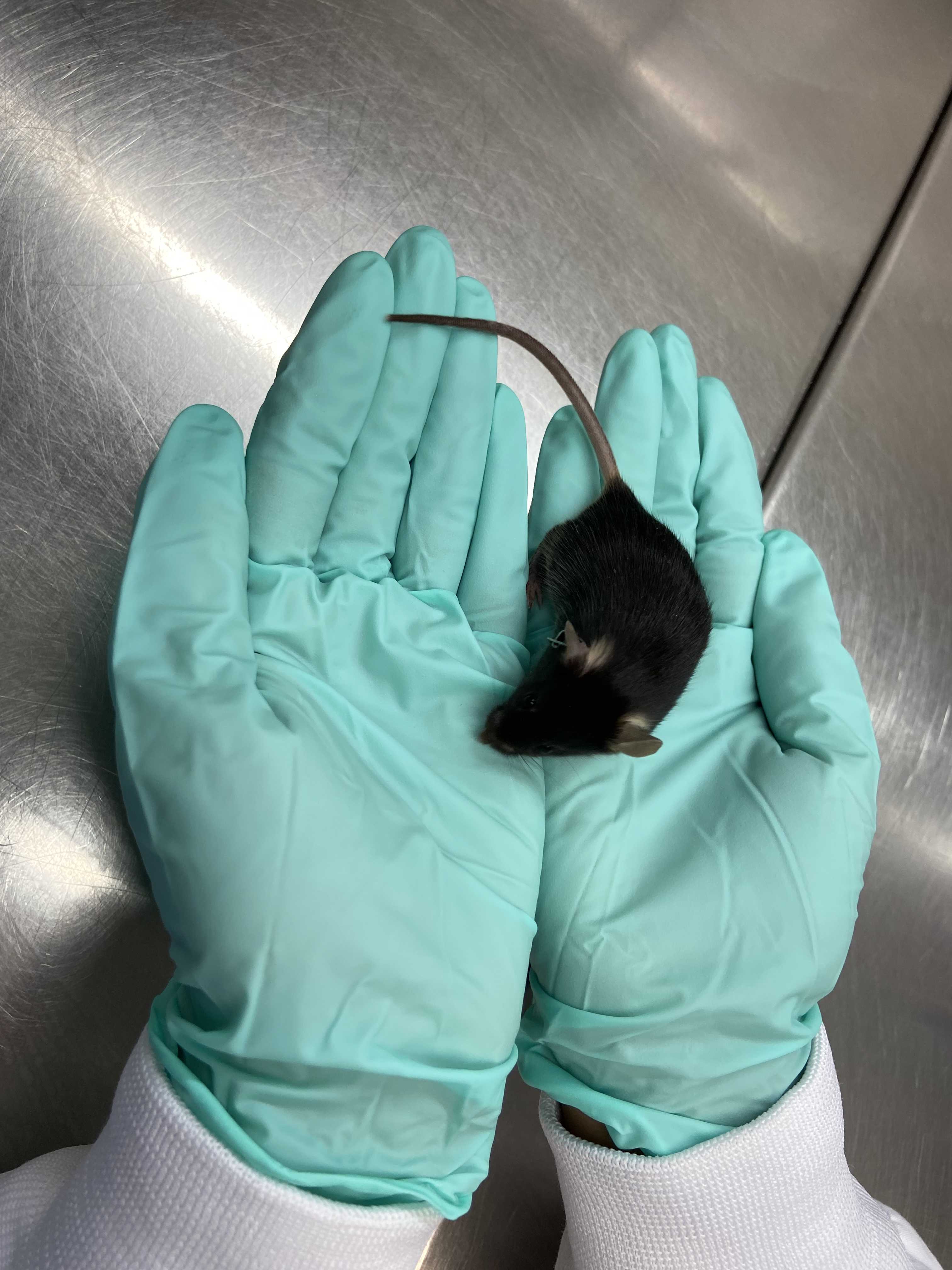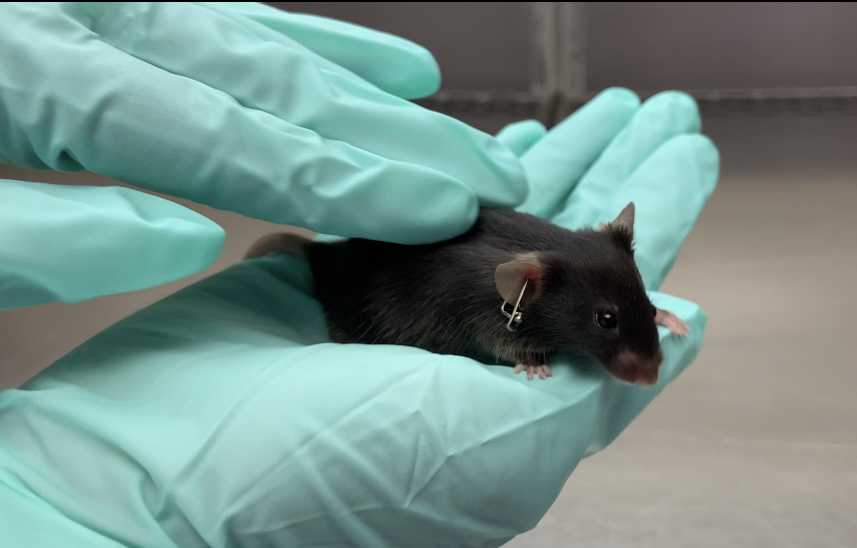Mouse handling to reduce stress and reactivity
Michael Marcotte, Ashley Bernado, Nathaniel Linga, Carmina A. Pérez-Romero, Srija Das, Jean-Louis Guillou, Etienne Sibille, Thomas Prevot
Abstract
This protocol provides a description of a mouse-handling technique which intends to minimize the stress experienced by animals when interacting with handlers. This technique focuses on habituating mice to their handlers and is performed over a 3 day period. The expected results from the use of this protocol includes reducing stress, anxiety and over-reactivity in mice, which can impact experimental results, as well as promoting animal welfare.
Before start
Identify a room to perform the handling. (housing room or separate room)
-
If handling in a separate room, allow the animals to habituate to the new room for 20-30 mins prior to initiation of the handling protocol
-
For group housed-animals, use a temporary cage to house mice after the handling session, before regrouping them all in their initial home cage. (This reduces potential fights between animals prior to handling, particularly males). Work on a counter (preferably a cleared countertop) or in a biosafety cabinet, with the housing cage away from the animal being handled.
-
Working in a biosafety cabinet limits the risk of mice jumping on the floor, and can be required in certain facilities. This technique can be used in a biosafety cabinet, making sure to always perform all steps inside the biosafety cabinet, and avoiding mice walking on handler forearms.
-
If working on a counter, working in a corner or against a wall will limit the risk of mice jumping over the counter and falling on the floor.
Attachments
Steps
DAY 1: 5 minutes per mice
Gently open the cage and place the lid on the side, remove nesting materials, and other enrichment such as running wheels or shelters.
Attempt to pick up the mouse in the palm of the hand (i.e. avoid picking up the animal by its tail)
With the mouse in the hand, keep the hand as flat and open as possible.
After 1 min of handling with flat hands, relax the palm of the hand, and slightly cup the mouse in the hand, prior to gently rolling the mouse between hands.
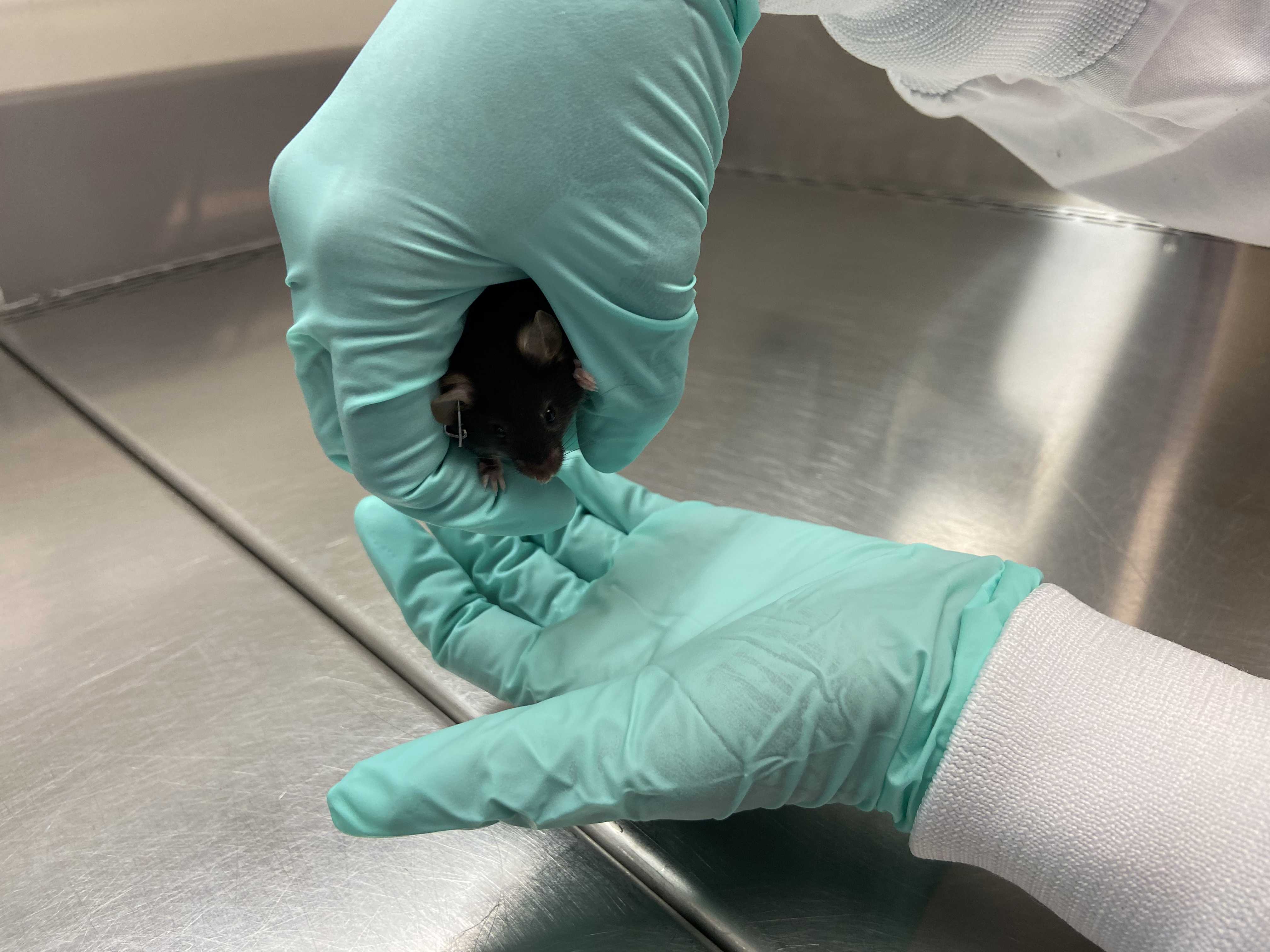
Alternate from gentle rolling between hands and free exploration on open hands for 60s, alternating between techniques about every 20s.
Perform a "shelter test" by forming a shelter with both hands.
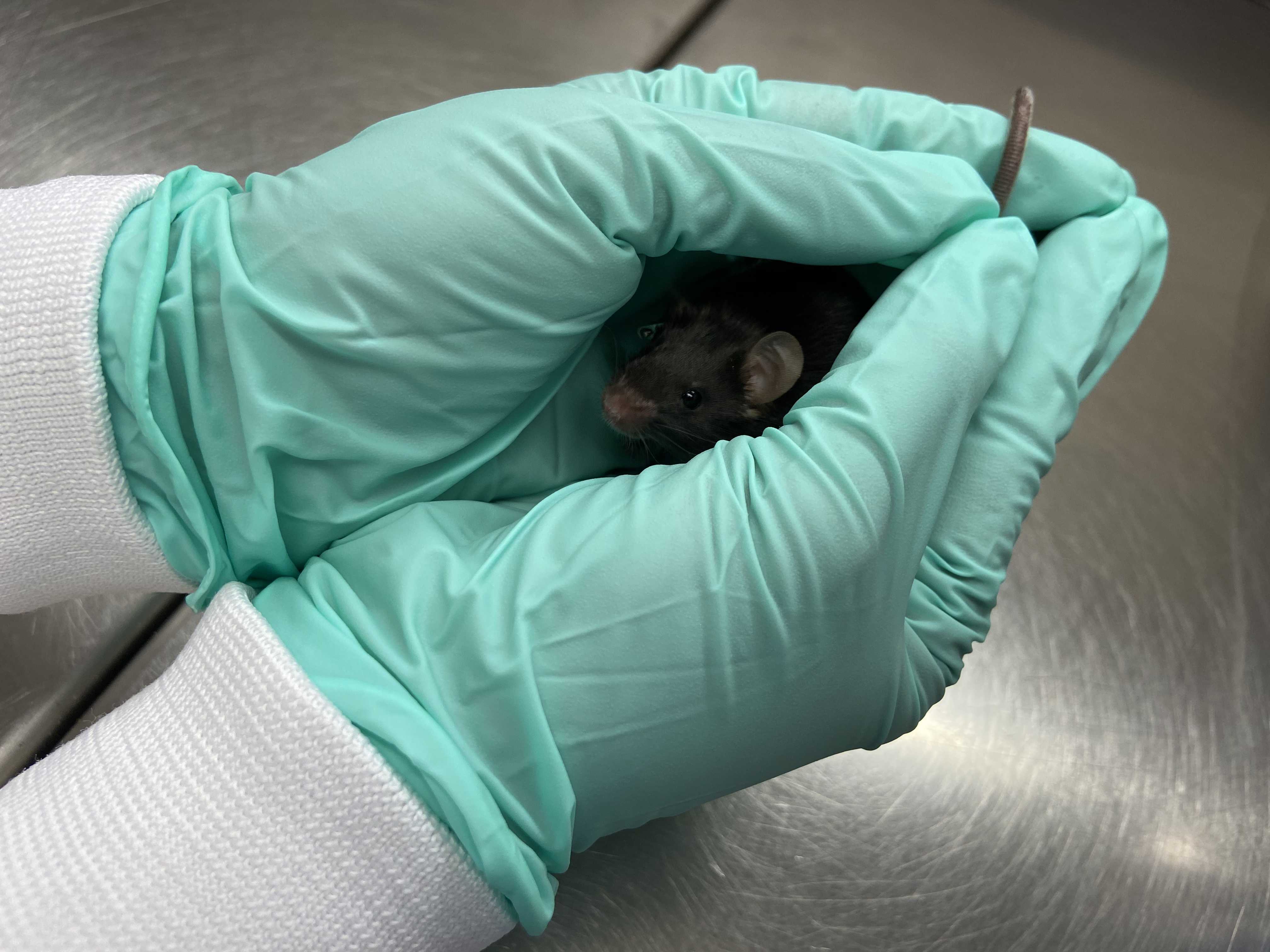
Milestone: Perform at least 1 successful shelter test of 10s for completion of Day 1.
Allow free exploration in hands for 30s.
Gently replace the mouse in its cage. If group housed, place the mouse in the temporary cage until all cage mates are handled. Return the mice to their original cage by picking them up in the palm of the hand. Do not use a tail pick up.
Clean the bench top of potential feces and urine with 70% ethanol.
Rinse gloves thoroughly with 70% ethanol (or appropriate cleaning solution) or change gloves prior to handling the next mouse (it is possible to keep the same gloves for cage mates).
DAY 2: 3 to 5 minutes per mouse
Attempt to pick up the mouse in the palm of the hand. At this stage, it should be already feasible and mice should not jump out of the hand.
Start with palm open as on Day 1, allowing the mouse to explore freely for 20s.
Then, roll the mouse between hands a few times (4-5 times).
Perform the "shelter test" for 5s.
Repeat the shelter test several times (~5-6) over a 2 to 3 min period.
During the same 2 to 3 min period, alternate with the roll between hands and free exploration of open hands step from day 1.
Perform a "Nose poke": Try to touch the snout of the mouse, 2 to 3 times
If the mouse attempts to bite or shows obvious signs of stress at being touched, do not immediately attempt the nose poke again. Instead, alternate with flat hand exploration and roll. "Habituation" is reflected by the animal not running away or turning its head in cases of human contact.
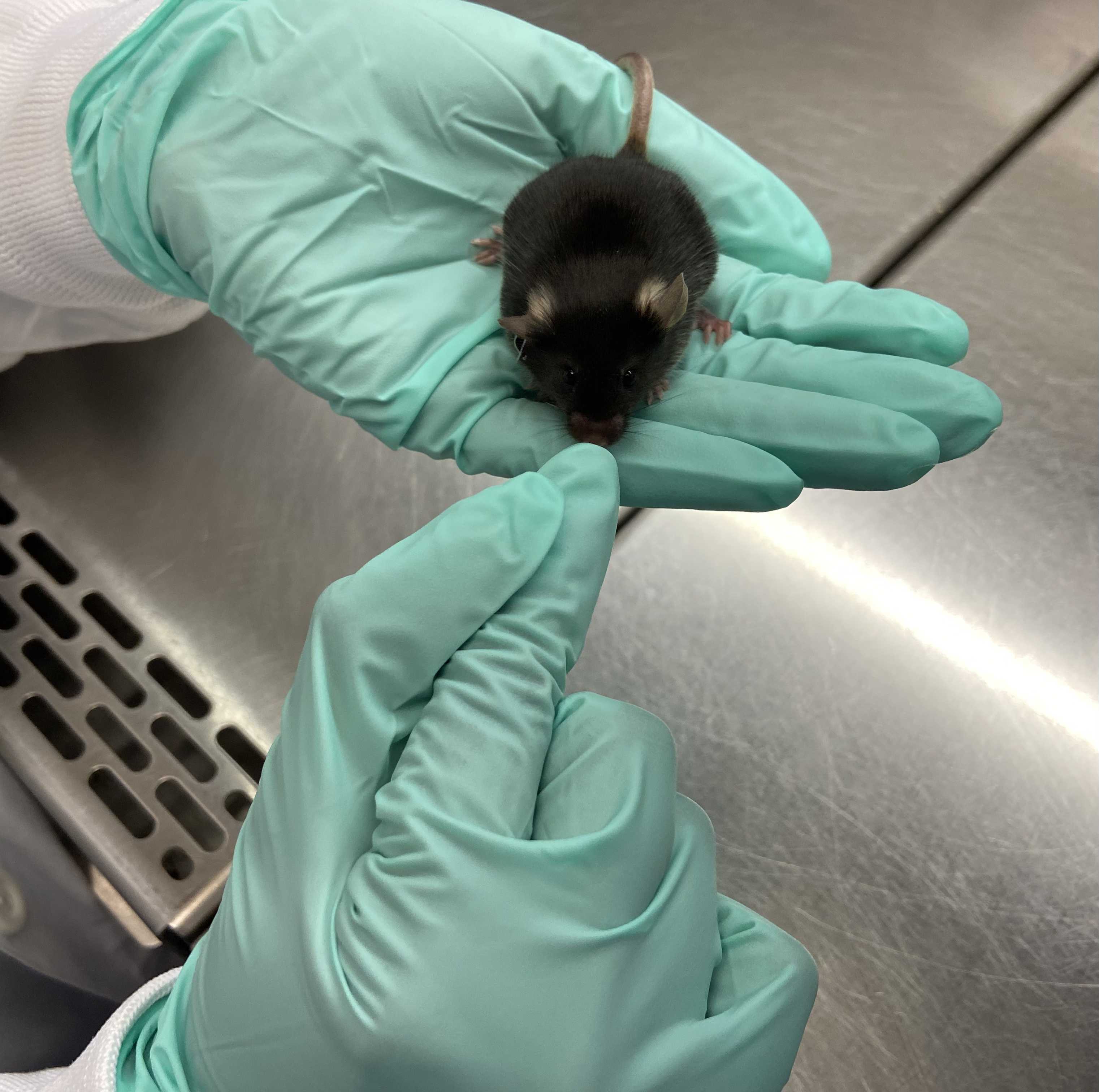
Milestones: Perform at least 1 successful nose poke for 2-3 s for completion of Day 2.
Replace the mouse in its cage, clean the bench top and gloves as in Day 1.
DAY 3: Around 3 minutes per mouse
On the third day, proceed through the same steps as in Day 2, for 2 to 3 min.
Alternate between these steps over approximately 1 to 2 min.
Continue the procedure until the mouse is relaxed enough to sit in the palm of the hand without attempting to escape.
Before the end of Day 3, repeat the shelter test and nose poke test as a test of habituation.
Continue gently handling the mouse for 30s to a minute.
Milestones: Perform at least 2 successful shelter tests of 10 s each, and 2 successful nose poke test for completion of Day 3, and completion of the entire 3D handling procedure.
Return the mouse to its cage, clean the bench top and gloves.
Optional approach for animals to be subjected to restraint for injection or gavage
Lift the mouse 3-5 cm above the hand for 2-3 s.
Place the mouse back on in the flat hand, or if the mouse is reactive to the neck pinch, consider placing it on the experimenter's sleeve, cage lid or countertop
Leave the mouse to freely explore the experimenter's hand for 1 min.
Optional approach for additional days of handling
In the eventuality of a highly stressed mouse line, add additional days to decrease the reactivity and stress level of the animals, using the methods described in Day 2/3.

